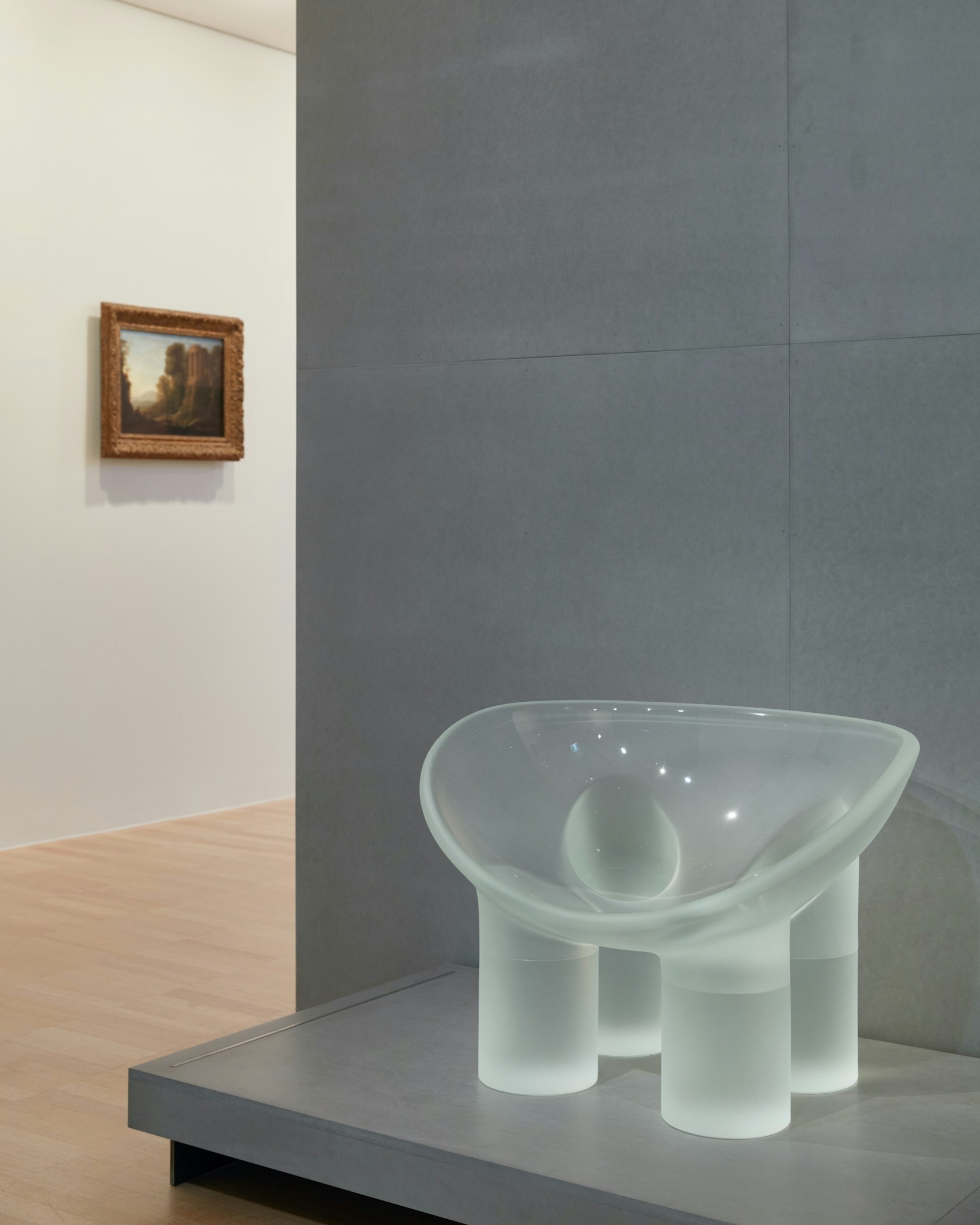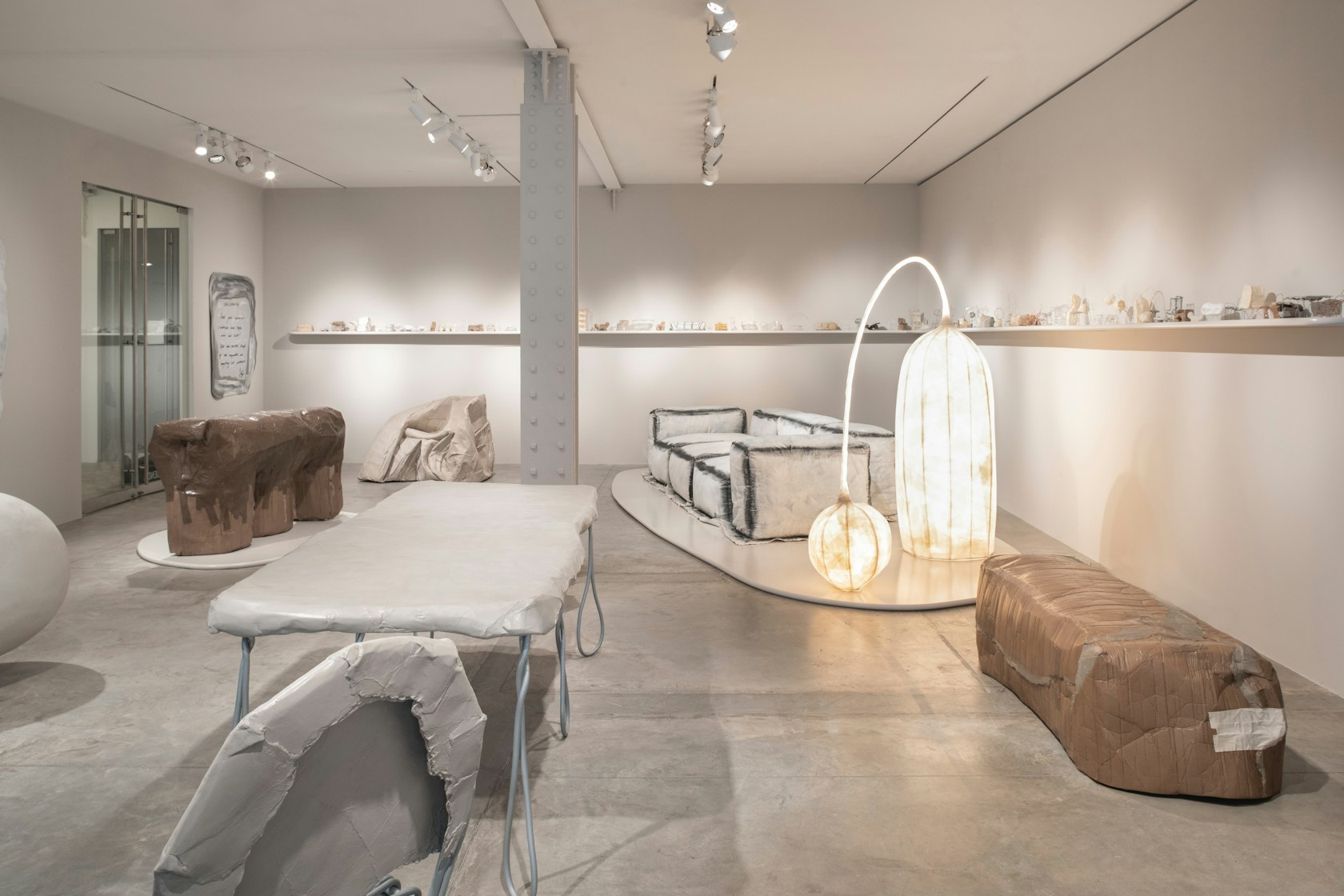
Design Visionary Faye Toogood on Her Inspirations, Reinvention, and Iconic Roly-Poly Chairs
The endlessly original maker continues carving her own path by embracing femininity, experimentation, and above all, unpredictability
- By Stephanie Sporn
- Meet the Artists
One of today’s most influential names in contemporary design, Faye Toogood did not pursue a traditional training in design, which has given her the freedom to envision new directions. “I saw myself more as a curator or an editor of shapes and materials,” she tells TEFAF. Since establishing Studio Toogood in 2008, the award-winning British designer has coined her own vocabulary to reference her multidisciplinary practice, which encompasses furniture and fashion, sculpture, and interior design. Claiming to not have “the guts” to call her creations “collections,” Toogood refers to them as “Assemblages,” a word whose collage connotations further reflect her studio’s bread and butter: blurring boundaries.
“When I set up the studio I would try and find other people like me that didn’t want to be pigeonholed. Quite early on I labeled everybody the ‘Misfits’ because we didn’t fit in anywhere else, but we felt comfortable around the table here,” explains Toogood, whose personal training was in fine art and art history. “It was my intrigue that took me to different places, but actually in a practical way, it has ensured survival for the studio.”

While buzzy projects, such as her most recent Birkenstock collaboration of footwear, ready-to-wear, and furniture, are expanding Toogood’s audience, signature pieces—none more so than the Roly-Poly Chair—have rendered her studio world famous. “She’s always in the corner of the room. I wonder if I’ll ever be able to design a chair with quite the same impact,” says Toogood on the curvilinear piece, which she created in 2014 after the birth of her first child. Her prior work, which she describes as a “female designer asserting [herself] in a male-dominated environment,” was angular, heavy, and hard hitting.
Like many great works, the chair was at first polarizing, but Marc Benda, founder of New York gallery Friedman Benda, was an early fan and encouraged Toogood to produce the design in different materials. Now representing the designer, Friedman Benda will be exhibiting a sand-cast bronze, silver nitrate version of the chair during TEFAF Online 2021. Titled Roly-Poly Chair / Moon, the piece was part of her 2016 Assemblage 5, inspired by a visit to Henri Matisse’s Chapelle du Rosaire de Vence in the South of France. The experience proved particularly spiritual for Toogood, who produced Roly-Poly chairs in various materials to reflect the earth (clay composite), water (crystal glass), and moon (silver nitrate).

“Everything that I was starting with felt like it was referencing my own work or someone else’s work, so it was important to me to find a new design language.” — Faye Toogood
While Toogood says her three pillars are “landscape, sculpture, and materials,” her artistic and decorative influences run the gamut. St. Ives artists, including Barbara Hepworth, Ben Nicholson, Patrick Heron, and Henry Moore (particularly their connection to found and natural objects, as well as their moody color palettes) are among her chief inspirations. She also cites Phyllida Barlow, Louise Bourgeois, Richard Serra, and Anselm Kiefer. In terms of the decorative arts, many would be surprised to learn the seemingly minimalist Toogood has a predilection for 17th-century English objects and American folk art, ranging from Windsor chairs to patchwork quilts and ceramic slipware.

Like the irregularities and cracks of these traditional handmade pieces, Toogood’s œuvre prizes spontaneity—her best work results from not being overly precious. Whereas most designers start with sketching, Toogood goes straight into model making. “I liken it to a childlike experience where they’re not fully concerned about what’s going to happen because they’re so busy making the next thing,” explains Toogood. “I was interested in retaining that very moment of creativity, of making, before you develop, process, polish, and perfect.”
Her most recent body of work, Assemblage 6, saw upwards of 300 maquettes made from mundane materials found in her studio. It was a product of a year-and-a-half spent in a self-imposed lockdown, interestingly pre-COVID-19, where she sought to block outside influences in order to “unlearn.” “Everything that I was starting with felt like it was referencing my own work or someone else’s work, so it was important to me to find a new design language,” says Toogood. “I took from that that sometimes tearing everything up and starting again is really healthy.”
Looking ahead, Toogood now has plenty of maquettes to fuel future designs, and she is increasingly interested in experimenting with scale (jewelry has been a longtime curiosity) and color. “People are always trying to predict what’s coming next,” says Toogood. “But they can’t, and I don’t know if I can either.”


